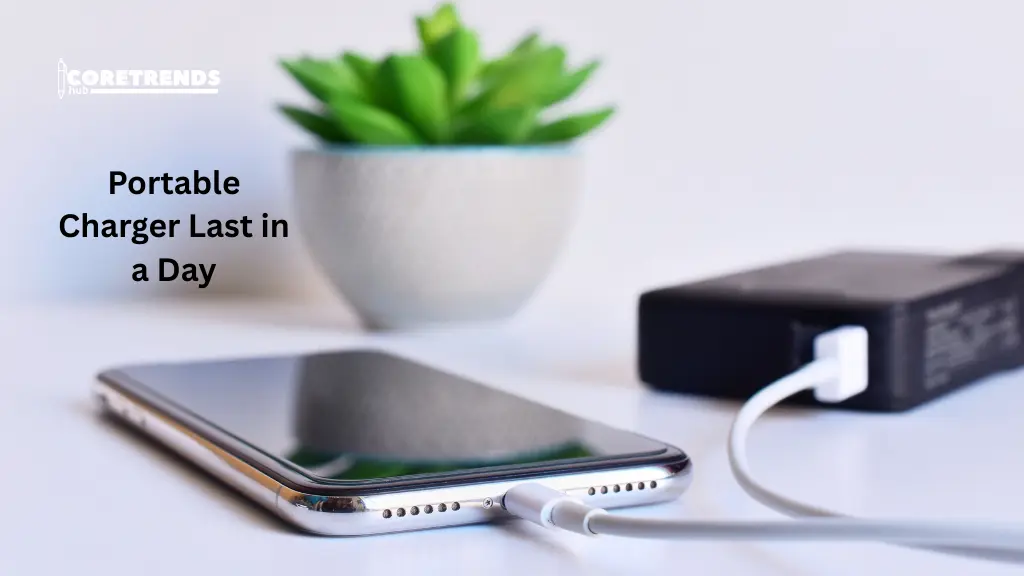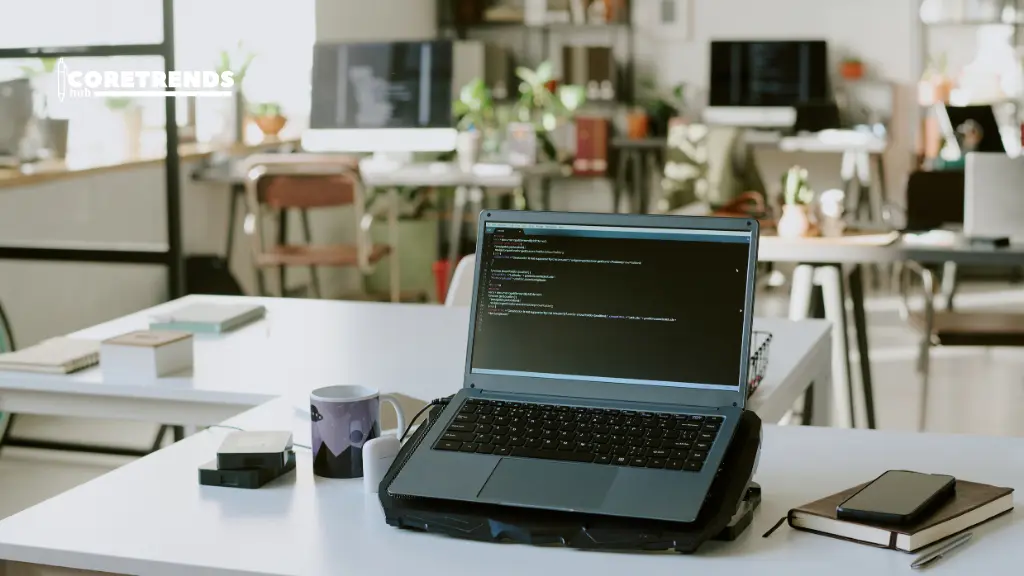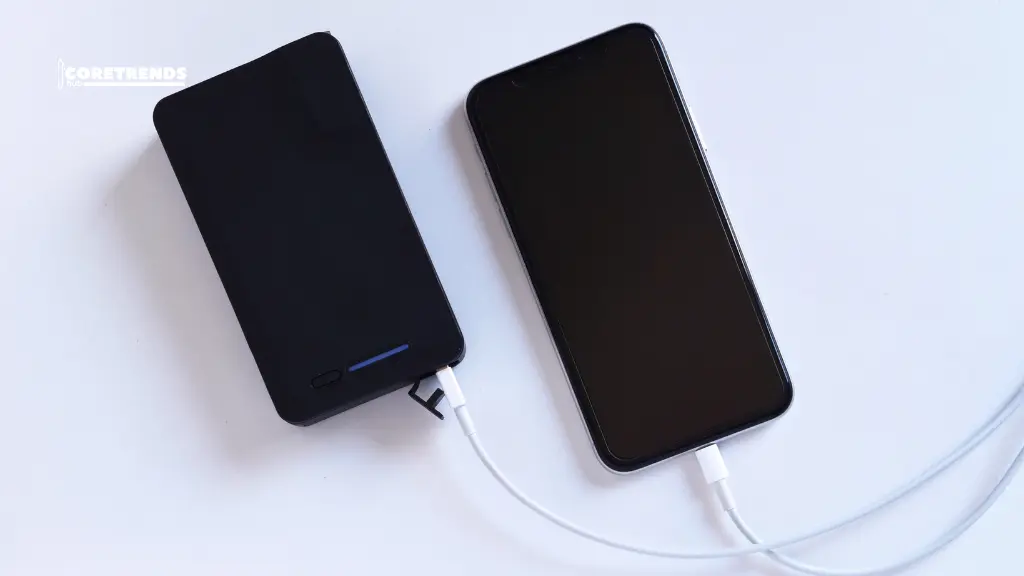A portable charger is a small device that stores electrical power. You can use it to charge phones, tablets, and other gadgets when there is no wall outlet. It comes in different sizes and capacities. Some are tiny and fit in your pocket, while others are bigger and hold more power. Portable chargers are useful for travel, work, or emergencies when your device battery is low.
Knowing how long a portable charger lasts in a day helps you plan its use. It tells you how many times you can charge your devices before it runs out. This prevents running out of power unexpectedly. It also helps you choose the right charger for your daily needs.
Table of Contents
Factors That Affect Battery Life
Number of Devices Connected
Charging multiple devices at the same time puts more load on the portable charger. Each device draws power, which makes the battery drain faster. Limiting the number of devices connected at once can help the charger last longer.
Device Power Requirements
Devices that need more energy, like tablets or cameras, consume more battery than smaller devices like smartphones or earbuds. Using high-power devices frequently can reduce the total daily usage of your charger.
Charging Speed and Output
Fast charging delivers more electricity in a short time, which is convenient but uses more battery quickly. Chargers with higher output ports may drain faster if used constantly at full power.
Environmental Conditions
High heat can cause the battery to overheat and lose efficiency, while extreme cold can slow down the battery performance. Keeping the charger in normal room temperature helps maintain its daily capacity.
Average Usage Time for Common Chargers
Small Capacity Chargers (5,000–10,000mAh)
These chargers are compact and easy to carry in a bag or pocket. They usually provide one full charge for a smartphone or a few partial charges for multiple devices. They are ideal for short trips, quick emergencies, or daily light use when you don’t need multiple full charges.
Medium Capacity Chargers (10,000–20,000mAh)
Medium-capacity chargers can fully charge a smartphone 2–4 times in a day. They are suitable for heavier daily use, short travels, or charging two devices at the same time. They balance portability with enough power to keep your gadgets running longer without recharging the charger frequently.
High Capacity Chargers (20,000mAh+)
High-capacity chargers can charge multiple devices several times in a day. They are larger and heavier, so they are less convenient to carry daily but perfect for long trips, outdoor activities, or when multiple gadgets like phones, tablets, and cameras need charging. These chargers ensure your devices stay powered all day.
Measure Your Charger’s Daily Performance
Checking Battery Levels
Regularly check your portable charger’s battery before and after charging devices. This helps you understand how much power is used per charge and estimate how many full charges the charger can provide in a day. Keeping an eye on battery levels also prevents unexpected power shortages.
Tracking Device Charging Frequency
Keep a simple log of how many times you charge each device during the day. Note which devices use more power and how often the charger needs to be recharged. This helps you plan usage and avoid running out of battery when it’s most needed.
Observing Charging Time
Measure how long it takes to fully charge your devices from the portable charger. If charging becomes slower over time, it may indicate the battery is losing efficiency or that the devices require more power than usual.
Recording Environmental Conditions
Note the temperature and surroundings where you use the charger. High heat can overwork the battery, while extreme cold can slow performance. Understanding these effects helps you use the charger more efficiently in different conditions.
Common Mistakes That Drain Portable Chargers Fast
- Leaving Devices Connected Too Long: Keeping devices plugged in after they are fully charged continues to draw power. This wastes battery and reduces the total number of charges your charger can provide in a day.
- Using the Charger in Extreme Temperatures: Exposing your portable charger to very hot or very cold conditions can make it lose power faster. Heat can damage the battery, while cold can slow down charging efficiency and reduce performance.
- Charging High-Power Devices Frequently: Charging power-hungry devices like tablets or laptops repeatedly in a short time drains the battery quickly. This reduces the charger’s overall daily usage and may wear out the battery faster.
- Overloading the Charger with Multiple Devices: Connecting too many devices at once strains the charger. It can cause overheating and reduces the battery life, meaning it won’t last as long throughout the day.
- Using Low-Quality Cables or Adapters: Poor-quality or damaged cables can reduce charging efficiency. They may draw more power than necessary, causing the charger to drain faster and sometimes overheat.
Maintaining Your Portable Charger for Longevity
To keep your portable charger working well for a long time, it is important to clean and store it properly. Wipe the ports and surface regularly to remove dust and dirt. Store the charger in a cool, dry place and avoid leaving it with sharp objects that could damage it.
Avoid letting your charger fully drain before recharging. Partial charges are better for the battery and help maintain its efficiency over time. Frequent full discharges can reduce the battery’s overall lifespan and daily performance.
Always use good-quality cables and the correct adapters. Poor-quality or incompatible accessories can reduce charging efficiency, cause overheating, and even damage the battery. Also, avoid exposing the charger to extreme temperatures. Very hot or very cold environments can weaken the battery and shorten its daily performance.
Tips to Make Your Portable Charger Last Longer
- Avoid letting your charger completely run out before recharging. Partial charges help maintain battery health.
- Charging multiple devices simultaneously drains the battery faster. Connect only what you need.
- Always use good-quality cables and compatible adapters. Poor-quality accessories reduce efficiency and may overheat the charger.
- Avoid using or storing the charger in hot or very cold places. Extreme temperatures can reduce battery performance.
- Disconnect devices once fully charged to prevent unnecessary battery drain.
- Keep the charger in a dry, safe place away from dust and sharp objects to prevent damage.
Conclusion
A portable charger is very useful for keeping your devices powered throughout the day. How long it lasts depends on its capacity, the number of devices you charge, and how you use it. Small chargers may give one full charge, while larger ones can power multiple devices several times. Using the charger correctly, like avoiding overloading, extreme temperatures, and poor-quality cables, helps it last longer.
By following simple tips and maintaining your charger properly, you can extend its daily performance. Knowing how your charger works lets you plan usage and ensures your devices stay ready whenever you need them.



